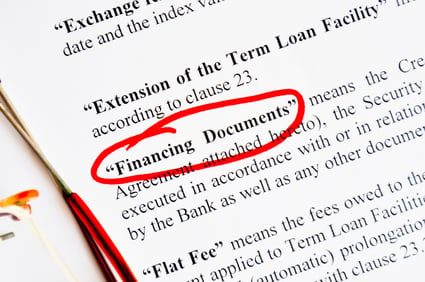The International Trade Blog International Sales & Marketing
Trade Letters of Credit versus Standby Letters of Credit
On: March 10, 2002 | By:  Chris Lidberg |
4 min. read
Chris Lidberg |
4 min. read
 Whenever I teach a seminar, I frequently ask the question, “How many of you enjoy working with trade letters of credit?” If a couple of hands go up, I’m surprised.
Whenever I teach a seminar, I frequently ask the question, “How many of you enjoy working with trade letters of credit?” If a couple of hands go up, I’m surprised.Whenever I teach a seminar, I frequently ask the question, “How many of you enjoy working with trade letters of credit?” If a couple of hands go up, I’m surprised.
There are a variety of reasons why this payment tool causes such dread. Perhaps it’s the level of attention to detail that turns people off. Maybe it’s the high banking costs associated with trade letters of credit. How about the ambiguity that sometimes appears in the credit? And no matter how hard you try, it seems like there are always discrepancies.
Despite the fact that I love working with letters of credit, I certainly can understand why importers and exporters are reluctance to embrace the trade letter of credit.
One would think that there would be another option that could provide the assurance of payment without resorting to a trade letter of credit. The good news is that there is: a standby letter of credit. The bad news is that it’s not for everyone.
The trade letter of credit is intended to be a payment tool. Everyone involved in the transaction expects documents to be presented to the bank for payment.
With a standby letter of credit, however, just the opposite is true. It is not intended to be drawn upon. Banks expect this type of letter of credit to expire unutilized. In other words, if an international transaction works the way it is supposed to work, the seller never needs to present the standby letter of credit to the bank for payment. Instead, it serves as a backup mechanism to be drawn against only if something goes wrong between the buyer and seller.
Standby letters of credit are a very flexible payment tool and can be used is just about any situation. So when might you use a standby instead of a trade letter of credit?
Let’s imagine that you have been selling goods to a particular buyer for the last couple of years. The relationship is established and everything is going smoothly, but you’d like to cut costs. During a year’s time, you make 10 shipments to your customer, each in the amount of USD50,000. Instead of using trade letters of credit totaling USD500,000, a standby LC might make more sense.
First you will need to determine what your maximum exposure will be at any given time during the year. Let’s say, for example, that you never have more than three unpaid orders: one that you are currently manufacturing, one currently being shipped to the customer, and one that the customer has received but not yet paid for.
If you go this route, you’ll have to closely monitor shipments going out versus payments coming in. You never want to have an exposure greater than the three orders. If payment doesn’t come in when expected, you will need to draw against the standby and not start the manufacturing process for the next shipment.
However, if payments do come in when expected, you continue to ship on what amounts to open account terms. You have simplified your life because you don’t need to be concerned about the details of the trade letter of credit, and you’ve saved money by eliminating all those trade letter of credit fees.
The language in a standby letter of credit usually consists of a statement from the beneficiary indicating that something hasn’t happened, in this case payment, and a draft. Since the documentation is simplified and typically not as ambiguous as a trade letter of credit, you lessen the chance of discrepancy.
With a standby letter of credit, your only banking costs are the advising fee and, in the unlikely event that you need to draw against the standby letter of credit, an examination fee. The buyer, who is applying for the standby letter of credit, will pay for only one standby credit, which should be cheaper than the 10 trade letters of credit.
Is this too good to be true?
Earlier I mentioned that standby letters of credit are not for everyone. They work beautifully when you have a long-term relationship with a buyer and have established a level of trust.
You need to keep in mind, however, that standby letters of credit are very easy to draw against. Banks only check to see if the documents presented to draw against the letter of credit agree with the terms of the letter of credit. They do not verify that what is claimed in the documentation is true and correct. In other words, a seller could fraudulently draw against the standby letter of credit and receive payment.
For this very reason, if you don’t have a well-established relationship with the buyer, they may be reluctant to go the standby route.
Like what you read? Join thousands of exporters and importers and subscribe to the International Trade Blog to get the latest news and tips delivered to your inbox.

About the Author: Chris Lidberg
Ms. Chris Lidberg was an independent consultant in the area of international banking and Letters of Credit. Ms. Lidberg had more than 25 years of international banking experience, most recently as Vice President at U.S. Bank where she was part of the International Trade Services Division. She was responsible for selling the bank's international products to both customers and prospects, and conducting Letter of Credit seminars.
During her 25 years in banking, 15 of those years were spent in the Letter of Credit area, holding various supervisory positions, later to manage the Letter of Credit department. MS. Lidberg went on to become the manager of International Operations where she was responsible for managing not only Letters of Credit, but also International Collections, Money Transfers, Cash Letters, Investigations and all Telex and SWIFT activities for the bank.


